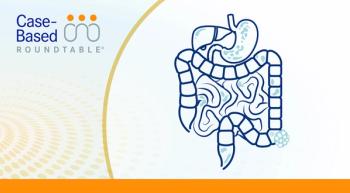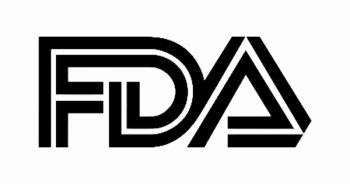
Dr Klempner Highlights Practice-Changing Role of Durvalumab/FLOT in Gastric Cancer
Durvalumab enhances event-free survival in resectable gastric and gastroesophageal cancers, revolutionizing neoadjuvant therapy according to the MATTERHORN trial.
The addition of durvalumab (Imfinzi) to standard fluorouracil, leucovorin, oxaliplatin, and docetaxel (FLOT) chemotherapy significantly improved event-free survival (EFS) in patients with resectable gastric and gastroesophageal (GE) junction cancers, according to data from the phase 3 MATTERHORN trial (NCT04592913).1
In this randomized trial, durvalumab was administered both before and after surgery. At a median follow-up of 31.6 months (range, 0.0-48.1) for the durvalumab arm (n = 474) and 31.4 months (range, 0.0-48.1) for the placebo arm (n = 474), the combination of durvalumab and FLOT led to a median EFS that was not reached (NR; 95% CI, 40.7-NR) vs 32.8 months (95% CI, 27.9-NR) for the placebo plus FLOT arm (HR, 0.71; 95% CI, 0.58-0.86; P <.001). The 18- and 24-month EFS rates were 73% and 67% in the durvalumab arm and 64% and 59% in the placebo arm, respectively.
While toxicities were consistent with known FLOT-related effects, primarily gastrointestinal and hematologic, they were equally distributed between arms, reinforcing the regimen’s safety profile.
In an interview with Targeted Oncology, Samuel Klempner, MD, gastrointestinal medical oncologist, Massachusetts General Hospital and faculty, Harvard Medical School, emphasized that MATTERHORN reinforces the importance of neoadjuvant therapy in managing locally advanced disease and called the data both practice-changing and supportive of multidisciplinary preoperative planning.
Targeted Oncology: What was the rationale behind adding durvalumab to the FLOT regimen in resectable gastric and GE junction cancer?
Klempner: The rationale for adding immunotherapy—in this case, durvalumab—to standard chemotherapy is based on a few lines of evidence. First, in the metastatic setting of gastric and GE junction cancers, we have seen that the addition of checkpoint inhibitors, either PD-1 or PD-L1 agents, improves outcomes. So, it was a reasonable next step to investigate whether that benefit could be translated into the nonmetastatic setting.
There’s also evidence from other tumor types suggesting that giving immunotherapy in the neoadjuvant setting—when the primary tumor is still present—might enhance the immune response, particularly by expanding tumor-specific T-cell clones. Overall, there are several rationales for exploring immunotherapy in non-metastatic patients, especially by including it in the neoadjuvant phase.
What were the methods and design of the MATTERHORN trial?
MATTERHORN is a cleanly designed trial. It essentially compares standard-of-care FLOT chemotherapy to FLOT plus durvalumab. Durvalumab was given both in the neoadjuvant and post-surgical adjuvant phases. Patients were randomized 1:1 between these 2 arms. The primary end point was event-free survival. Secondary end points included pathologic complete response and overall survival.
How did event-free survival differ between the durvalumab plus FLOT arm and FLOT alone?
Event-free survival is a relatively newer end point in gastroesophageal cancers and is now commonly used in perioperative trials. It is prespecified in the trial design to define what counts as an event (e.g., recurrence, progression, or death), and then you follow and compare the timing of those events between the arms. In MATTERHORN, there was an 8-percentage-point difference in the 24-month landmark EFS rate, statistically significant and in favor of the durvalumab arm. So, the study met its primary end point, showing that durvalumab plus FLOT improves event-free survival in this population.
What subgroups, if any, appeared to benefit most from the addition of immunotherapy?
The subgroup question is always interesting, and debated, in immunotherapy trials for gastric and GE junction cancers. In MATTERHORN, there was not any subgroup that clearly did not benefit from the addition of durvalumab.
Some directional differences were seen, particularly around known predictive biomarkers for immunotherapy: microsatellite instability [MSI] and PD-L1 expression. For PD-L1, the hazard ratio favored durvalumab across all subgroups, including those with low expression. The MSI-high subgroup was very small with few events, making it difficult to interpret conclusively.
Even when excluding MSI-high patients, the hazard ratio still favored durvalumab, suggesting benefit in the broader microsatellite stable population. As expected, PD-L1 high patients (CPS ≥10) appeared to do particularly well, as they often do in clinical trials.
How were safety and tolerability impacted by the addition of durvalumab?
That’s a critical question, especially in nonmetastatic, curative-intent trials. We need to know whether therapy impacts the ability to undergo surgery, perform surgery safely, and recover. In MATTERHORN, it was relatively clear that adding durvalumab did not impair the delivery of FLOT chemotherapy. Roughly equal proportions of patients in both arms received all neoadjuvant chemotherapy, proceeded to surgery, and initiated adjuvant therapy. This is consistent with prior data from other immunotherapy trials, such as KEYNOTE-585 [NCT03221426] and trials in other tumor types, showing that immunotherapy generally doesn’t interfere with the ability to perform curative surgery.
Were there any other safety or efficacy findings you would like to highlight?
FLOT is an intensive regimen and requires experience to manage. The expected toxicities, [gastrointestinal] issues like diarrhea, and hematologic [adverse events] like neutropenia, were observed but were equally distributed between the arms. So, the toxicities were FLOT-related, not due to durvalumab.
Over 90% of patients completed all neoadjuvant chemotherapy, suggesting increasing comfort and skill with administering FLOT. Reviewing dose adjustments and administration patterns in the final data may offer helpful insights for the broader oncology community.
What are the key clinical implications for oncologists managing resectable gastric cancers?
There are a few. First, I believe MATTERHORN is practice changing. We hope the FDA and other regulators review the data favorably and make the regimen available. Second, and perhaps more importantly, it reinforces the critical importance of the neoadjuvant phase in treating nonmetastatic gastric and GE junction cancers. Most of these patients have clinically node-positive or locally advanced disease. We do not have tools to reliably detect micrometastatic disease, so neoadjuvant therapy helps address that risk.
This means that patients should be discussed in a multidisciplinary setting before being taken directly to surgery. MATTERHORN supports that shift in thinking and workflow. In short, this trial doesn’t just bring new treatment—it reinforces a more thoughtful approach to curative care.
What does being a part of ASCO’s plenary session say about the significance of this study?
ASCO typically selects plenary data with immediate clinical impact. These are studies that are expected to change practice. Historically, plenary presentations at ASCO—and presidential sessions at ESMO—include data that lead to real-world changes in care. MATTERHORN fits that bill as well.








































